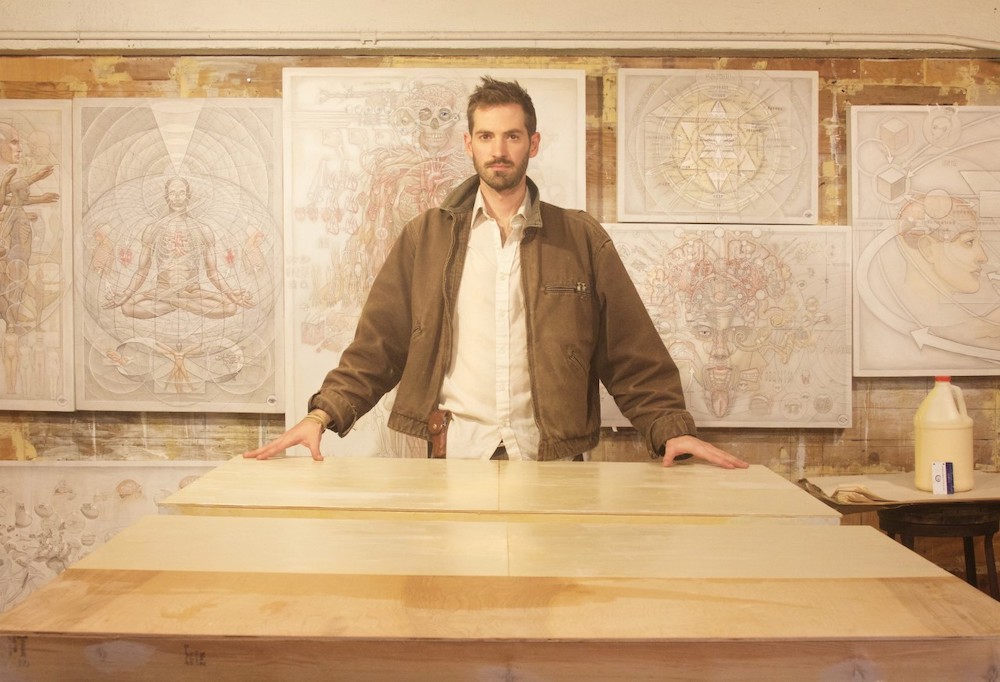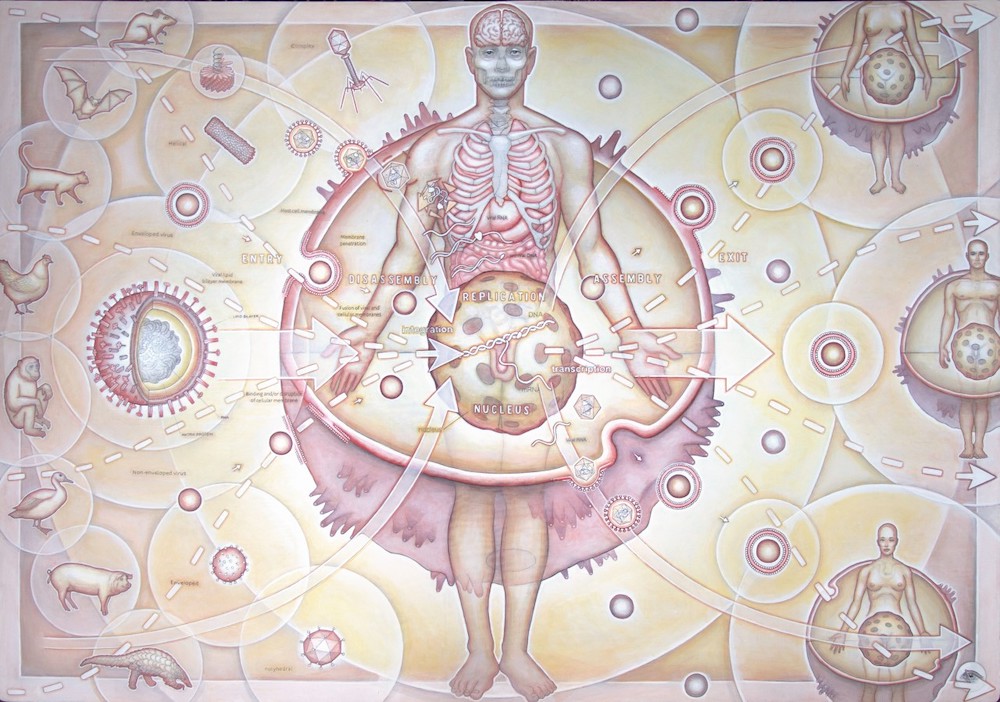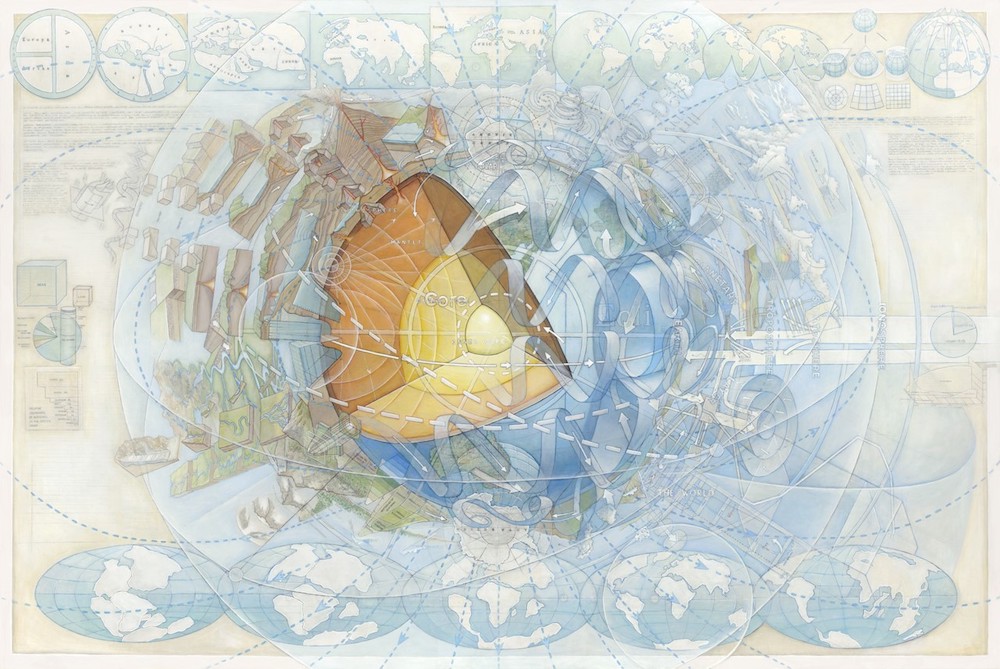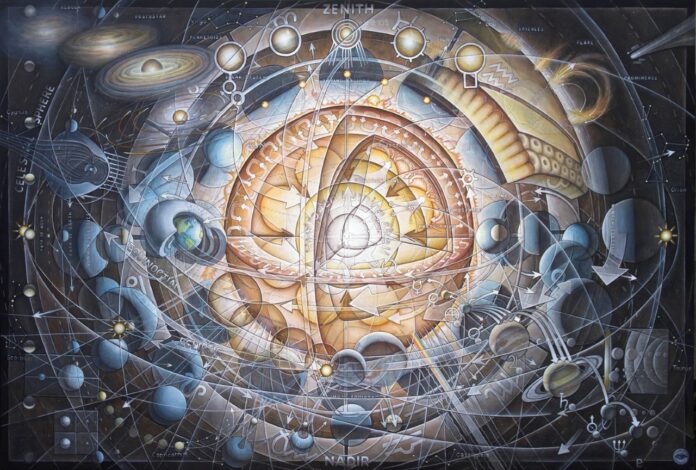San Francisco artist Casey Cripe is connected. His work presents as celestial, otherworldly—perhaps more intentionally-described as “better-worldly.” He is absolutely as bound to the physical plane as to the cosmos, inextricably linked up to the web of life.
From the ground up: Cripe was was born and raised in the South Bay suburb of Campbell. During his formative years, he spent much time exploring the coastal ranges of California, as well as the city of San Francisco.
“I am from here, I am of here,” Cripe told 48hills.

At an early, self-aware age, Cripe saw the rest of his life in front of him. He wondered who did he want to be, what did he want to be, how did he want to be, and why did he want to be? The answer to all four was: beautiful.
“This was my earliest dream of self,” Cripe said. “Ultimately, the why is still a mystery—a compulsion beyond my understanding, an imposition of archetype.”
More tangible, and maybe not-so-tangible dreams followed, and Cripe toggled between a desire to become a superhero, an illustrator-designer, and an explorer. Presently, he says he is integrating and actualizing all the dreams to become what he sees as an artist. Such a synthesis is evident in his explorations of the mindscape, in his meticulously-attended-to illustrations and prints. Like an archivist collecting artifacts, Cripe imparts knowledge from his compendium of findings in visionary form, with the simple materials of smooth paper and archival pigmented inks.

Cripe takes inspiration from wherever, whenever. At every opportunity, he aims to give back as much as he is able. A few wellsprings that provide him with reliable vitality are writers, architects, and theorists. These include Stewart Brand and his book How Buildings Learn, James Carse’s Finite and Infinite Games, Christopher Alexander’s The Timeless Way of Building, and cartoonist Scott McCloud’s Understanding Comics.
Crime described his own work as encyclopedic information visualizations.
“I am strongly, steadily driven by the fact that my time on this planet is so brief and I still have much to do,” he said. “The idea that ‘death awaits’ always gets me going.”
Memento mori. Socrates looms in the background for most—not so for Cripe.
He spends most days in his studio, which is located in a co-living “warehome” in the Mission District. His workspace is connected to his bedroom and library, the garden, living areas, woodshop, and other studios belonging to his beloved housemates.
When 48hills asked Cripe what is the one thing he could not live without in his studio, he replied, “oxygen.” He added that his work requires an abundance of tracing paper.
“Over 15 years, using similar materials and methods, my studio, my art, and my home have co-evolved in a life-affirming way that I am blessed to build upon every day,” Cripe said.

His work, both deep and intricate, is currently taking the form of illustrations for a project called “The Story We Are Telling Ourselves About Ourselves and Our Place In The Universe.” (No simple task!) He describes the drawings as a process of conscious choice—a synthesis of all his interests and skills, which provides an opportunity to stay curious about everything.
And what other interests does he engage, outside of being an artist? Cripe said he would have to argue there is no “outside.” He elaborated by saying he engages all his interests into being an artist—that, essentially, his blessing is his curse. Work, play, and life integrate into one force. More specifically though, Cripe enjoys gardening, DIY home-improvement, collecting and reading books, long walks anywhere, and wilderness backpacking. He also works part-time as an editor for The Long Now Foundation, a non-profit based in San Francisco that encourages long-term, slower thought process at the timescale of civilization—the next and last 10,000 years, a timespan also known as the long now.
Cripe recently returned to painting after an 18-month hiatus. Working on a new series of three panels, all identical in size and shape, he is illustrating universal aspects of the human experience including “human copulation,” “human life cycle,” and “human generations.” He says that his personal world has recently experienced a profoundly life-changing and dramatically work-disrupting era.
“I’m only now emerging from this period,” he said. “Certainly transformed, but still too soon for any solid sense of shape, so stay tuned!”
Final thoughts to share with readers?
“The message is this,” he said. “You be good. I love you.”
Casey Cripe says all are welcome to visit his studio. For more information, visit his website at caseycripe.com or Instagram.





